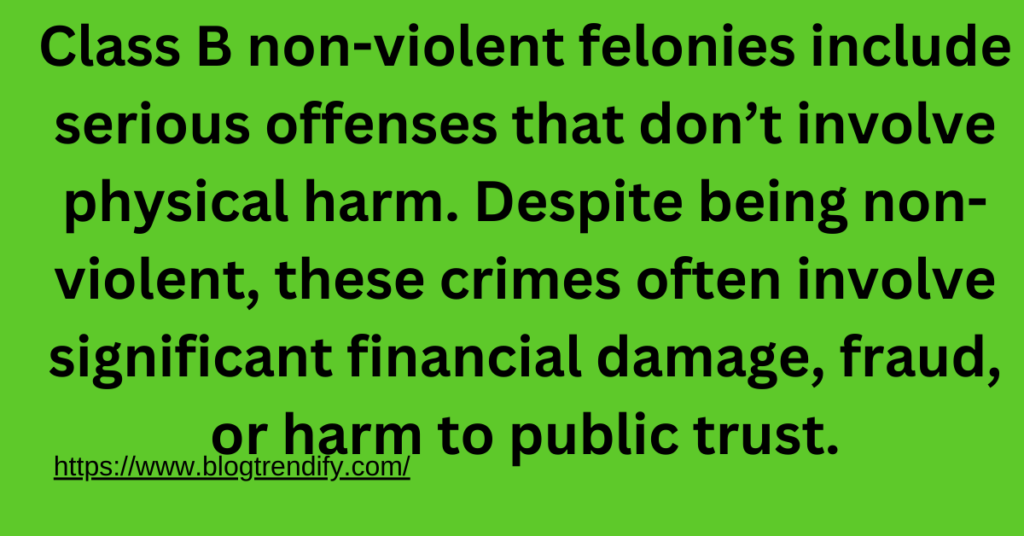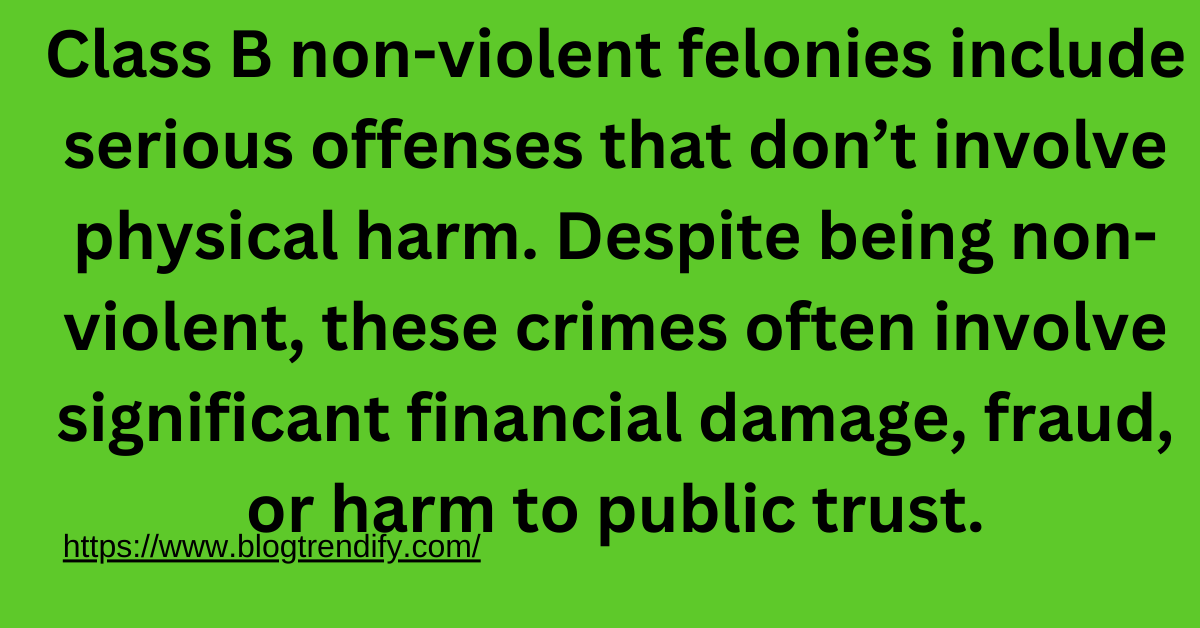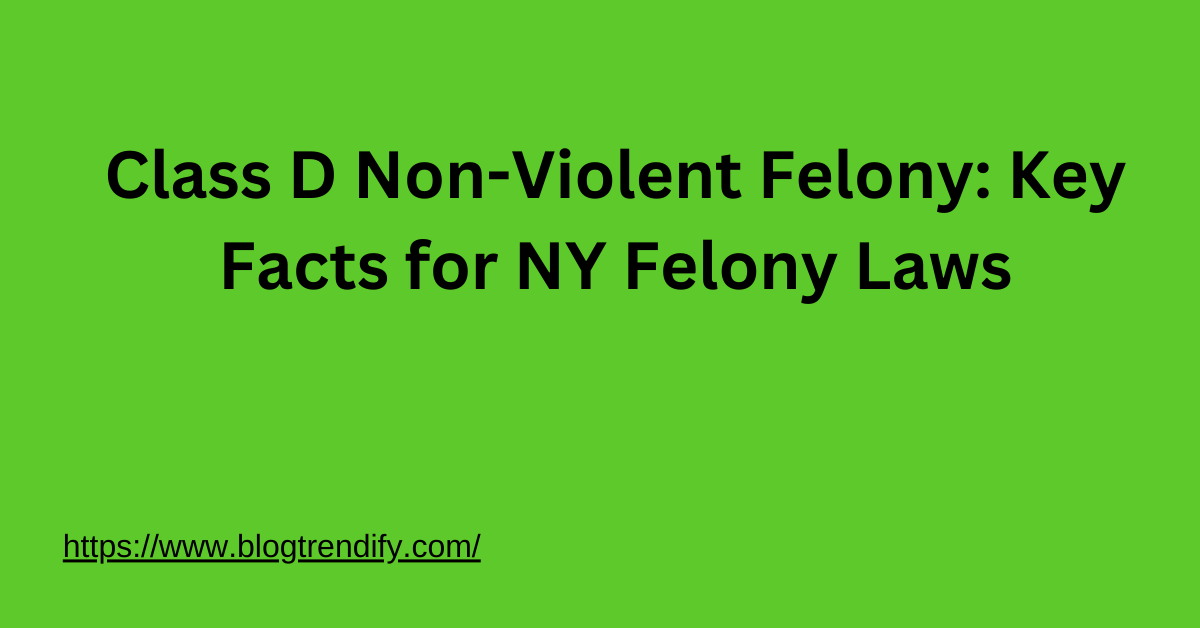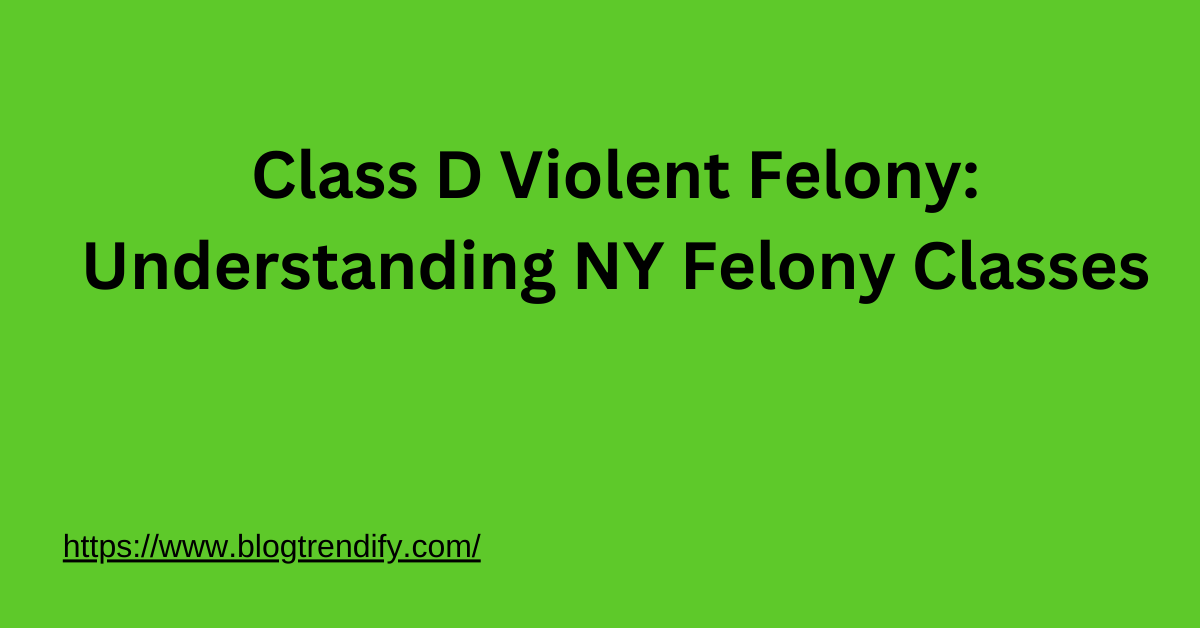Introduction
Table of Contents
ToggleNew York’s legal system categorizes felonies based on severity and nature. Class B non-violent felonies represent serious crimes without direct physical harm to others. These offenses carry substantial penalties and long-term consequences. In this article, we’ll explore the most common Class B non-violent felonies, their definitions, penalties, and potential defenses.
What Are Class B Non-Violent Felonies?
Class B non-violent felonies include serious offenses that don’t involve physical harm. Despite being non-violent, these crimes often involve significant financial damage, fraud, or harm to public trust.
Examples of Class B Non-Violent Felonies
Aggravated Insurance Fraud
Aggravated insurance fraud involves submitting false insurance claims to obtain benefits worth $1 million or more.
Bribe Receiving in the First Degree
This offense occurs when a public official accepts bribes to influence their decisions.
Bribery in the First Degree
Bribery in the first degree involves offering bribes to public officials to manipulate governmental actions.
Conspiracy in the Second Degree
Conspiracy occurs when two or more individuals plan to commit a Class A felony.
Criminal Facilitation in the First Degree
This crime involves assisting another person in committing a Class A felony.
Criminal Mischief in the First Degree
Criminal mischief refers to intentionally damaging property in a manner that endangers lives or causes significant financial loss.
Criminal Possession of a Controlled Substance in the Third Degree
This felony involves possessing narcotics with the intent to sell or in quantities above legal thresholds.
Criminal Possession of Stolen Property in the First Degree
This charge applies when an individual possesses stolen property valued at $1 million or more.
Criminal Sale of a Controlled Substance in or Near School Grounds
Selling controlled substances within 1,000 feet of a school increases the severity of the offense.
Criminal Sale of a Controlled Substance in the Third Degree
This crime involves selling narcotics or controlled substances unlawfully.
Grand Larceny in the First Degree
Grand larceny occurs when someone steals property valued at $1 million or more.
Insurance Fraud in the First Degree
This offense involves defrauding an insurance company for benefits of $1 million or more.
Promoting Prostitution in the First Degree
Promoting prostitution includes forcing or coercing another person into prostitution.
Tampering with a Witness in the First Degree
This crime occurs when someone uses threats or bribes to influence witness testimony.
Welfare Fraud in the First Degree
Welfare fraud involves unlawfully obtaining welfare benefits worth $1 million or more.

Penalties for Class B Non-Violent Felonies
Sentencing Guidelines
- Prison Time: Between 5 and 25 years
- Fines: Up to $30,000 or double the financial gain/loss from the crime
Probation and Parole
Defendants may be eligible for probation or parole under specific conditions.
Long-Term Consequences
- Loss of employment opportunities
- Difficulty obtaining housing or loans
- Damage to personal and professional reputation
Defenses Against Class B Non-Violent Felony Charges
Lack of Evidence
A common defense is arguing insufficient evidence to prove guilt beyond a reasonable doubt.
Mistaken Identity
The defendant may claim they were wrongfully identified as the perpetrator.
Violation of Rights
If law enforcement violated the defendant’s rights during investigation or arrest, evidence may be inadmissible.
The Importance of Legal Representation
Hiring a Skilled Attorney
An experienced attorney can:
- Analyze the case for weaknesses
- Negotiate plea deals
- Advocate for reduced sentencing
Public Defenders vs. Private Attorneys
While public defenders are skilled, private attorneys often provide more personalized attention.
Rehabilitation and Alternative Programs
Diversion Programs
Diversion programs focus on rehabilitation instead of punishment, particularly for first-time offenders.
Restitution Agreements
Some offenders may resolve their cases by repaying stolen funds or repairing damages caused.
Impact on Society and Individuals
Societal Effects
Crimes like insurance fraud and grand larceny undermine trust in financial and public institutions.
Consequences for Defendants
Defendants face not only legal consequences but also social stigma and personal challenges.
Conclusion
Class B non-violent felonies represent serious offenses with significant penalties. Understanding these crimes, seeking skilled legal counsel, and exploring alternative resolutions are vital steps for those involved in such cases. By addressing the root causes of these crimes, society can work toward preventing them in the future.
FAQs
1. What is the difference between violent and non-violent felonies?
Non-violent felonies don’t involve physical harm to individuals, whereas violent felonies do.
2. Can someone convicted of a Class B felony avoid prison?
Yes, alternatives like probation or diversion programs may apply depending on the case.
3. What is the punishment for welfare fraud in the first degree?
Welfare fraud can result in up to 25 years in prison and hefty fines.
4. How does bribery in the first degree differ from lower degrees?
First-degree bribery involves influencing high-level governmental actions or decisions.
5. Are Class B non-violent felonies eligible for expungement?
In New York, expungement options are limited, but sealing certain records may be possible under specific conditions.




